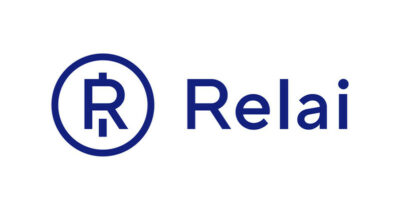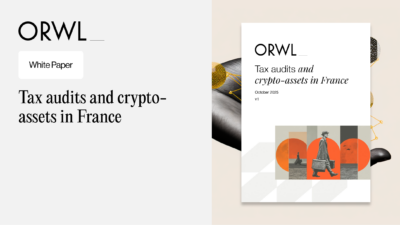
MiCA : the European regulatory framework for ICOs
This analysis is part of a series of articles on the MiCA regulation to be found here.
Since Ethereum’s Initial Coin Offering (ICO) in 2014, the public offering of crypto-assets has grown considerably to become an ubiquitous activity in the crypto industry. MiCA offers a comprehensive regulatory framework for crypto-assets & tokens issuance inspired mainly by current national and financial laws.
Token offering is a growing part of the primary market for centralized ($BNB for Binance, $OKB for OKX, etc.), decentralized ($UNI for Uniswap, $LDO for Lido, or the $AAVE) or NFT ($APE from the Bored Ape project or Sandbox’s $SAND) projects. Despite the diversity of projects, ICO remains a means of financing dedicated to the crypto ecosystem.
In practice, an offer of tokens to the public materializes through three elements:
the issuance of a token on a public blockchain,
a white paper that presents the issuer (e.g. a company, a foundation or a DAO) the characteristics of the sale (e.g. number of tokens, associated economic mechanism, etc.) and of the token (e.g. rights associated with the token, such as a voting right in a DAO).
A fundraising event, most often in the form of cryptocurrencies or a fiat currency that is legal tender.
These operations present a certain number of risks that justify a legal framework. MiCA regulation mainly targets three types of risks:
Firstly, these transactions present number of financial risks: asymmetry of information between the issuer and the acquirer, various frauds (exit scam, etc.);
Secondly, these transactions can serve as a medium for money laundering or terrorist financing. In order to address this issue, MiCA regulation refers to another body of text specifically dedicated to this issue (AMLR);
Thirdly, the regulation of these operations is currently fragmented within the European Union, with each country free to establish different qualification criteria (utility/security/payment token, etc.) and regulation of ICOs (optional visa, mandatory visa, etc.). In this sense, MiCA provides security and regulatory clarity that is unique in the world.
As such, MiCA plans to regulate the offer of crypto-assets to the public, which includes the issuance of utility tokens, but also all crypto-assets that cannot be qualified as asset-referenced or e-money tokens (mainly stablecoins). These two categories of crypto-assets will each be the subject of a dedicated analysis.
Here are the conditions required to carry out an ICO operation as well as the obligations weighing on the issuers.
What is an ICO according to MiCA?
MiCA is only intended to apply to an offer of crypto-assets to the public within the European Union.
By implication, a number of transactions are excluded from the text:
- private offerings, i.e. offerings accessible to less than 150 investors. In practice, these are private sales.
- offer to the public of crypto-assets solely addressed to qualified investors.
- public offerings that do not involve crypto-assets within the meaning of MiCA, namely:the offering of certain NFTs (collectible, art, etc.) ;
- the offer of tokens representing financial instruments or other instruments regulated by financial law or MiCA (asset-referenced and e-money tokens);
- the distribution of crypto-assets in exchange for the validation of transactions on the blockchain (mining/staking);
- ICOs that do not target European investors;
- free distributions of crypto-assets (airdrop) since, legally, the notion of offer normally implies an economic consideration. In this sense, it is interesting to note that MiCA explicitly refers to a consideration in the form of personal data (Article 4(2) of the draft regulation).
Main obligations for ICOs in MiCA
MiCA provides for a set of rules aimed at reconciling, on the one hand, the protection of investors in crypto-assets and, on the other hand, a form of flexibility made necessary by the innovative and emerging nature of these operations.
A protective regime for subscribers
Generally speaking, the protection of the subscriber implies the establishment of strict conditions in order to limit the asymmetry of information, to allow the subscriber to make an informed investment decision, to fight against fraud and to offer avenues of recourse in the event of a dispute.
This is the reason why MiCA provides that issuers will have to publish a white paper (the equivalent of a prospectus), the content of which will have to be subject to a specific formalism. Issuers will be expected to provide a precise description of the project, the type of crypto-assets issued and their financial characteristics, the rights and obligations attached to them as well as information on the technology used.
MiCA relies on the white paper – typical of the crypto sector – to make it the main source of information for the subscriber. The stated goal is to reduce as much as possible the information asymmetry between the lay investor and the token issuer.
It is also interesting to note that MiCA aligns the applicable requirements for marketing communication between the traditional financial sector and the crypto industry. Thus, issuers advertising operations will have to be identifiable as such, in addition to being fair, clear and not misleading (highlighting risks, etc.).
Finally, the European legislator expressly recalls that the essential requirements of consumer law remain applicable to ICO transactions. In this sense, the draft regulation provides for a right of withdrawal for the subscriber. Logically, this right will not apply to crypto-assets whose value is likely to fluctuate, particularly in the event of admission to a centralized or decentralized exchange platform (DEX).
In the same logic of protecting the subscriber, MiCA automatically rules out the possibility of excluding liability for the issuer.
A flexible regime for issuers
Given the innovative nature of the sector, the European legislator has opted for a pragmatic solution: prior notification by issuers to the regulator, instead of a formal authorization.
This solution has several advantages.
First, it considerably streamlines the procedure compared to a prior authorization regime. Second, it gives the industry more freedom to propose compliance solutions. Lastly, it avoids the clogging up of regulators often seen during bull runs periods.
Of course, this solution does not prevent a control by the regulator after the ICO. The regulator has particularly extensive powers, which will be presented in a forthcoming analysis.
A clear and balanced regulatory regime
MiCA firstly provides legal certainty for industry players by precisely defining the notion of crypto-assets as well as issuance operations.
This avoids the risk of reclassifying issued tokens as financial instruments, as it is common practice in the United States through the concept of security.
This legal certainty is further strengthened by the balance struck between a permissive regime, as in French law which introduces an optional visa for ICOs, and an overly strict approach (prior authorization or assimilation to the notion of financial instruments).
Finally, MiCA offers a regulatory harmonization at the European level, which is a source of simplicity for industry players who will now be exempt from having to adapt their operations to the legislation of each European country concerned.



